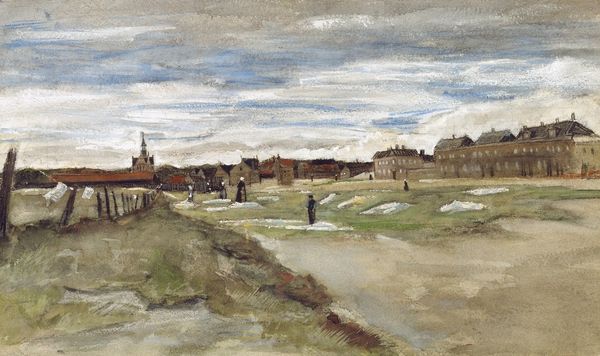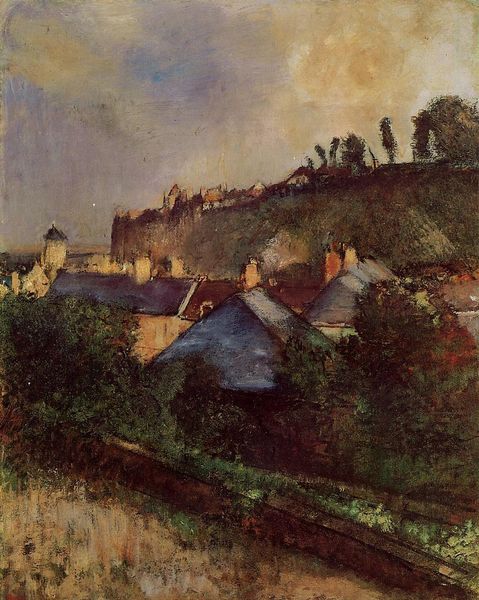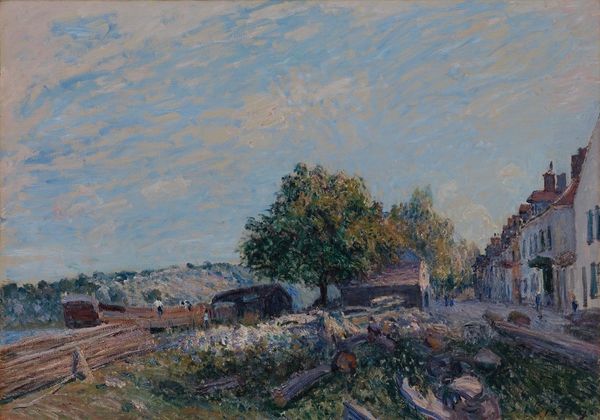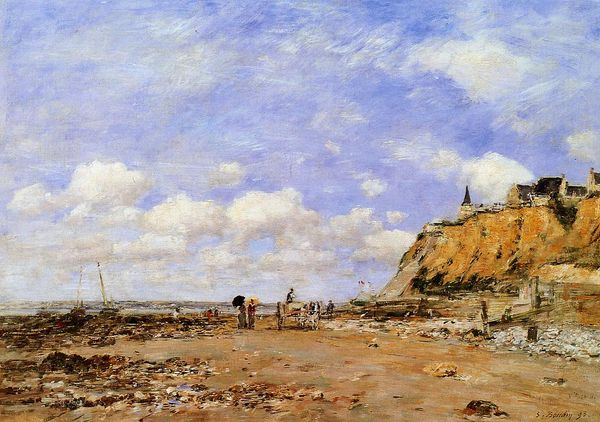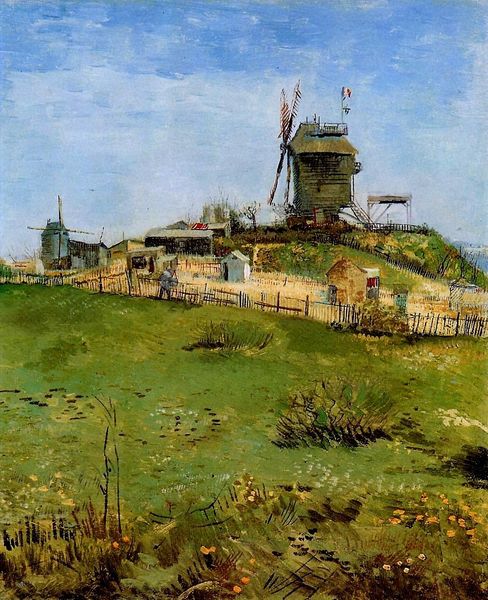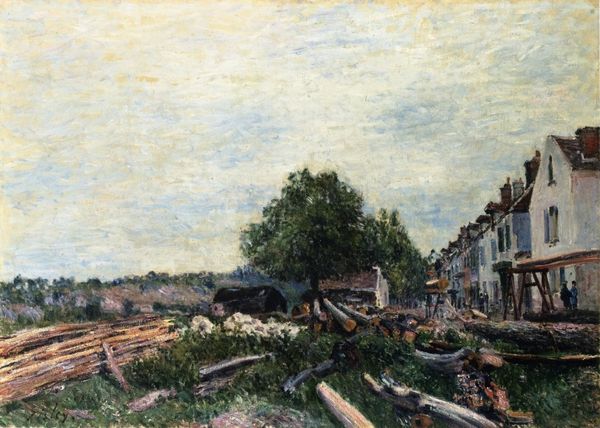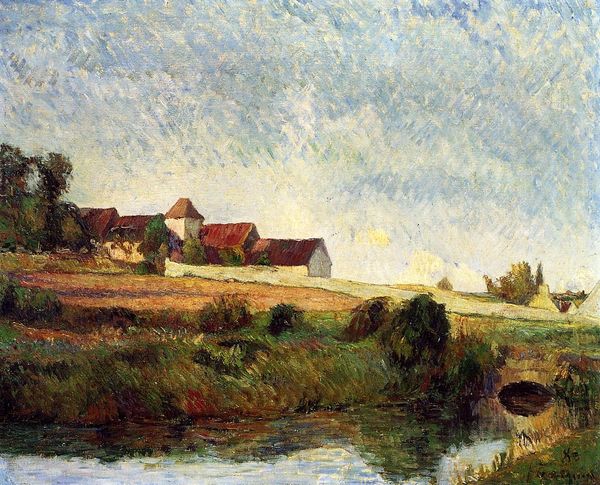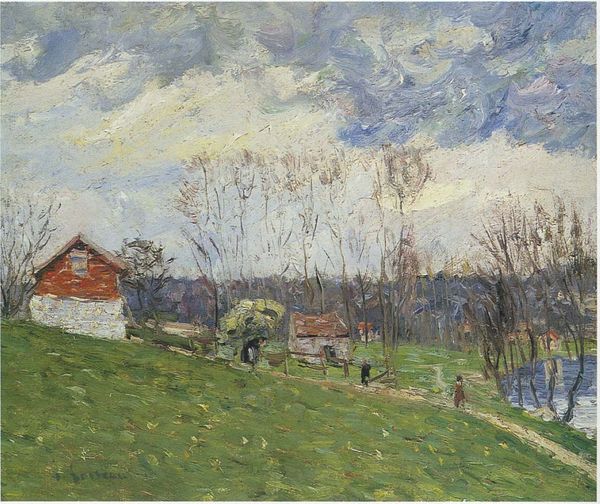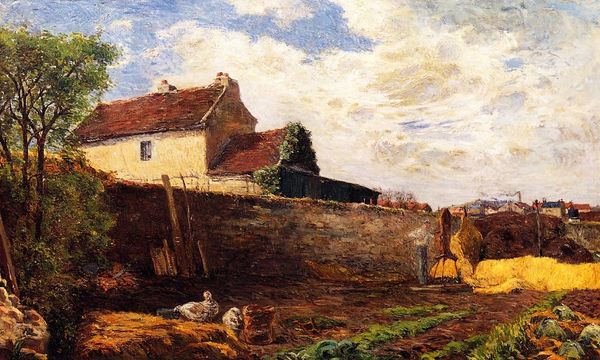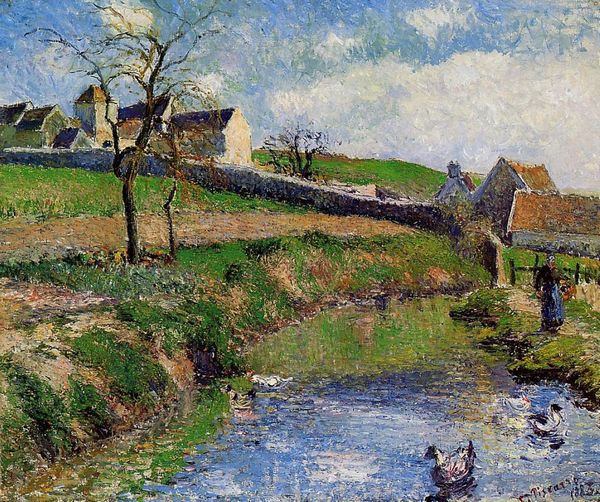
painting, plein-air, oil-paint
#
sky
#
cliff
#
painting
#
impressionism
#
plein-air
#
oil-paint
#
landscape
#
house
#
impressionist landscape
#
oil painting
#
rock
#
cityscape
Copyright: Public domain
Editor: Here we have Vincent van Gogh's "Montmartre the Quarry and Windmills" from 1886, made with oil paint. It strikes me as quite bleak; the colours are muted and there's this almost industrial feel to the landscape, even with the windmills. What do you see in this piece? Curator: Immediately, I’m drawn to the composition itself. Notice the distinct layering. Van Gogh masterfully uses the foreground's rough texture to guide the viewer’s eye upwards, contrasting it with the smoother hill and sky in the background. How does that layered approach strike you? Editor: It does create depth, definitely. I’m curious, what about the brushstrokes? They look so deliberate and kind of broken up. Curator: Precisely! Van Gogh employs visible brushstrokes, not just to depict light and shadow but to construct the very forms themselves. Observe how the individual strokes coalesce to create a tangible sense of texture, a very constructed sense of reality. It emphasizes the materiality of the paint, yes? Editor: Yes, I see that now! So, it's not just about representing a landscape, but also drawing attention to the painting itself as an object? Curator: Exactly. He makes no attempt to hide the way the image is constructed and how its surfaces operate. Editor: This conversation has highlighted just how much information is conveyed in Van Gogh's construction and the application of paint. Curator: Agreed. Analyzing those formal aspects grants profound insight into the artwork’s intrinsic qualities and expressive potential.
Comments
No comments
Be the first to comment and join the conversation on the ultimate creative platform.

